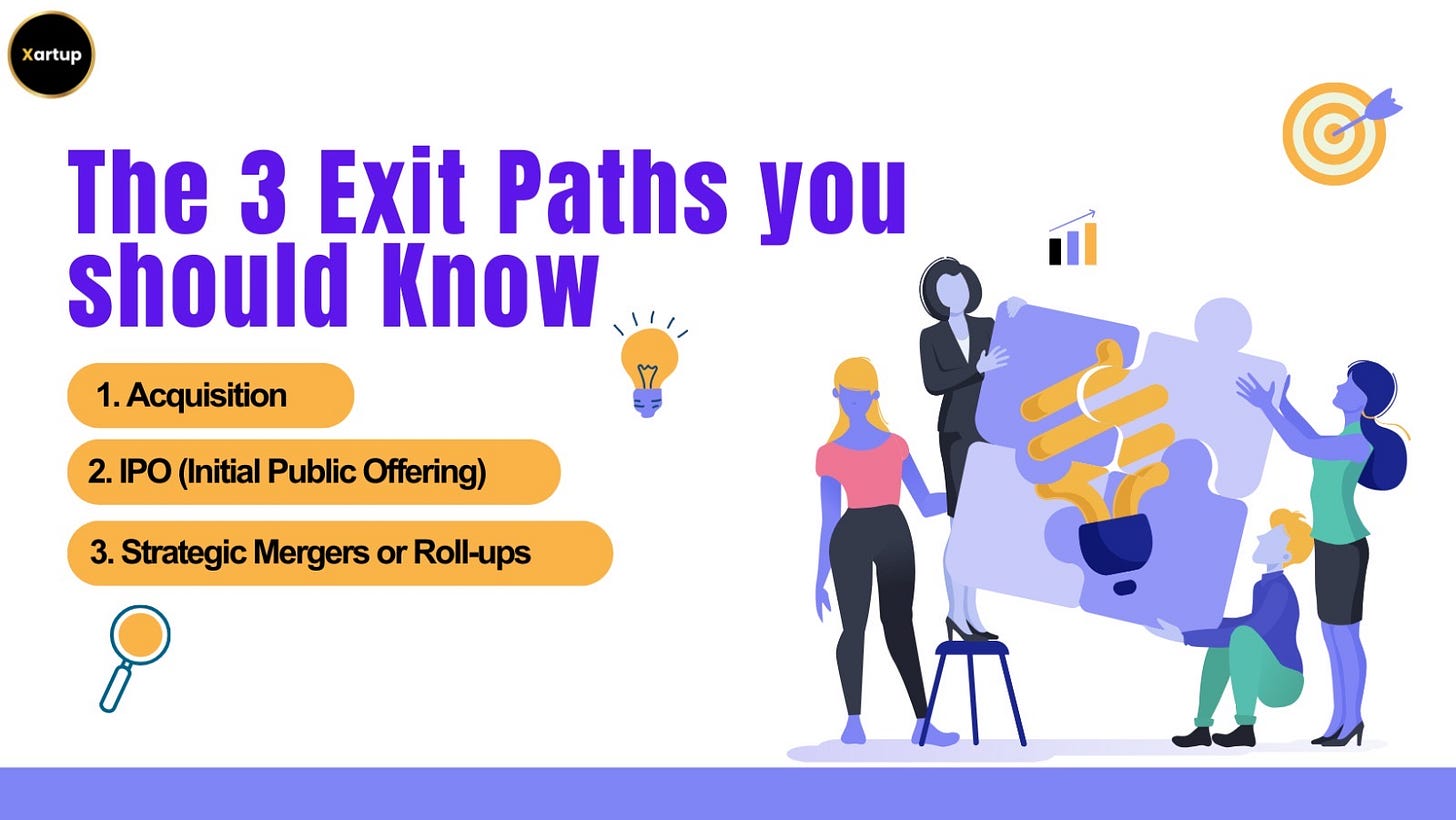Exit Strategy: How to communicate it clearly to Investors
That one question has tripped up more founders than technical glitches ever could.
Let’s start with an awkward moment.
You’re pitching your heart out to a VC. You’ve walked them through the problem, the market size, your traction. Things are going well. Then they hit you with it:
“What’s your exit strategy?”
You pause.
You could say: “We plan to get acquired by Google in 4–5 years.”
You could show the fancy exit slide you copied from a pitch deck template online.
You could start naming potential acquirers.
But all of that would be a mistake.
Here’s why — and how to actually handle that question like a founder who gets it.
Now the Question is Why VCs Really Ask About Exit Strategy?
Let’s be clear:
This isn’t about whether you’re eager to sell out in 3 years.
It’s about signals.
When a VC asks about your exit strategy, they’re trying to assess:
Do you understand how venture capital works?
Do you know who plays in your space and what consolidation looks like?
Are you aware that “building value” means understanding the entire lifecycle — not just building features?
Because here’s the truth no one tells you:
VCs don’t make money when you build a great product.
They make money when your company has a liquidity event.
And that liquidity usually comes in one of three forms...
The 3 Exit Paths You Should Know (and Reference)
When you’re asked about your exit strategy, this is the framework you should be drawing from:
1. Acquisition
Most common form of exit — think Instagram by Facebook, or LinkedIn by Microsoft.
If your company adds strategic value to a larger player’s roadmap, an acquisition becomes a win-win.
2. IPO (Initial Public Offering)
The sexiest, but rarest, path — only ~1% of startups go public.
IPOs are usually for market leaders, with strong fundamentals and category dominance. If you’re dreaming of this route, be ready to explain what gets you there.
3. Strategic Mergers or Roll-ups
In industries with fragmentation, roll-ups happen when a few players merge to gain scale and operational efficiency.
This is common in SaaS, D2C, or niche verticals.
Pro Tip: VCs love founders who can name 2–3 companies in their ecosystem that are active acquirers or IPO candidates. It shows you’ve done your homework.
What Not to Say
Here are a few common founder responses that raise red flags:
❌ “We haven’t really thought about it.”
→ Sounds like you’re only focused on today, not the bigger picture.
❌ “We’re not building this to sell.”
→ Sounds noble but misses the point. You don’t have to sell, but you must know how an investor gets liquid.
❌ “We’ll just IPO.”
→ Sounds naive unless you explain why your market and trajectory align with IPO expectations.
Xartup, in collaboration with VCCircle and IIT Bombay, is excited to present the 1st chapter of The Pitch FY 25-26 – India’s leading fundraising platform for startups.
Building on the success of 4 impactful chapters in FY 24-25, where over 170 startups pitched to 60+ investors, The Pitch now moves to Mumbai.
Don’t miss out on this exclusive opportunity to pitch your startup one-on-one to India’s top investors at IIT Bombay on 6th June 2025.
Apply now and take the next step towards raising capital and scaling your business!
How to Answer Exit Strategy Like a Pro
You want your answer to signal:
You're focused on value creation
You're aware of market dynamics
You’re keeping your options open (aka optionality)
Here’s a sample response you can tweak:
“Our primary focus is to build long-term value for customers and carve out a leadership position in this space. That said, we’re aware that companies like X, Y, and Z have actively acquired players in adjacent verticals. While we’re not building to sell, we’re certainly building something that could attract strategic interest down the line. We’re keeping optionality open — whether that’s M&A or potentially going public if we hit certain scale metrics.”
How Figma Aced Their Exit (Without Chasing It)
When Figma was acquired by Adobe for a jaw-dropping $20 billion, it sent shockwaves through tech Twitter.
But what’s fascinating is:
Figma’s founder, Dylan Field, wasn’t building to sell.
He was building with clarity:
He knew Figma was reshaping design workflows.
He understood the power dynamics between creation tools and distribution platforms.
And he probably knew: If we become the OS for product design, the right people will come knocking.
VCs who backed Figma didn’t just see a design tool.
They saw an intelligent founder who was deeply aware of market architecture.
That’s what made the exit both massive and believable.
Final Takeaway for Founders
In this edition, we broke down one of the trickiest but most important questions in any VC meeting:
“What’s your exit strategy?”
Exit thinking isn’t about cutting the journey short — it’s about proving you’ve built something that can create long-term value, for both you and your investors.
When you can confidently answer the exit question, you’re not just pitching a vision.
You’re showing you understand the full business lifecycle — from Day 1 to the final mile.
That’s what makes VCs listen. And remember you.
Useful Resources to Go Deeper
📚 Books
🎧 Podcasts
📺 YouTube Videos
🌐 Websites / Tools
CB Insights – Startup Exit Tracker – Link
Craft.co – Market & Acquirer Research – Link
How Xartup Helps You Fundraise Smarter
Instead of blindly reaching out to investors, use a strategic approach:
✅ Leverage Xartup’s Investor Database to find the right VCs based on sector & stage.
✅ Join the Xartup Fellowship to access mentorship & growth resources.
✅ Get Technical Credits to test your product and many more.
🚀 Ready to optimize your fundraising? Join xartup.com







